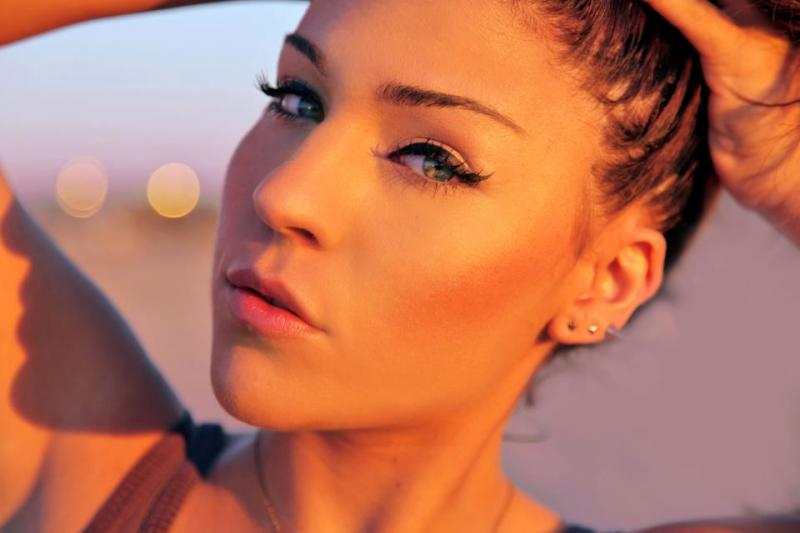A Trich-y Situation: Understanding Compulsive Hair-Pulling

Hair pulling is a misunderstood and understudied psychological compulsion that is said to affect a recorded four percent of people and 1.2 percent of Americans today. As many as one in 100 Americans suffer from trichotillomania, and the disorder is four times more likely to affect women than men.
However, those numbers are probably much higher, because most people do not just openly admit they pull their hair, and may suffer in secret for years.
Symptoms of trichotillomania include and are not limited to: twisting hair, practicing self-injury, balding or patching of hair, bowel blockage from eating hair, depression and anxiety.
Trichotillomania or “trich” is usually noticeable, and in serious cases, results in bald spots, alopecia or complete hair loss. People with trich feel a sense of relief or thrill when pulling their hair and may “get so lost” in these feelings that they may not even notice when they are picking. For those battling trich, the sensation drawn from pulling a hair feels better than anything else.
While speaking with ABC News, trichotillomania specialist Dr. Nancy Keuthen noted that individuals who suffer from trich, “may spend hours in front of a mirror in these very odd postures trying to locate that one hair that they know is there that they feel doesn't belong."
Although there is no known cause or cure for “the hair pulling disorder,” psychologists have identified specific causes and risk factors associated with trich. In 2013, the Mayo Foundation for Medical Health named family history, age, gender, negative emotions, positive reinforcement and other disorders as the primary risk factors for trichotillomania. Many people who pull their hair are also compulsive about other things, like weight or nail biting, or suffer from other disorders, such as Depression or Anorexia.
The severity of Trich can range from occasionally pulling a few eyelashes every few weeks to pulling off every single hair on one’s body. Some young children with trichotillomania are mistaken for cancer patients and wear bandannas or sashes to hide their patchy or bald scalps.
Because most people begin pulling their hair between the ages of 11 and 13, it can be extremely stressful to deal with “feeling, seeming or looking different” during the early stages of adolescence. Children with noticeable cases of trich may also suffer from extreme social anxiety, bullying or may feel a need to over compensate in other areas to make up for not representing typical standards of beauty.
Those who are deemed “the mild cases” are encouraged to use creams and make-up tricks to hide their disorder. There are “eyebrow specialists” at make up stores like Sephora and MAC who will specifically help clients, promising to “have them back to normal” with eyebrow pencils, toners and creams in countless colors and shades.
Sufferers who pull below the waist may have an easier time hiding their disorder, but feel a deeper sense of shame when it comes to admitting their problem, especially when they find romantic partners.
Because methods of self-injury like skin and hair pulling are often perceived as “bad habits,” individuals who resort to these coping mechanisms do not seek help or realize that these “habits” usually stem from deeply rooted, psychological issues.
The shame associated with having trich is heavily influenced by the media, particularly the modeling and film industries, which have transformed hair and body image into the characteristics that define standards of beauty and femininity today.
But the most horrifying part of dealing with trich is the realization that one’s family and friends may feel more shame and embarrassment about the "problem" than the actual individual suffering from the disorder.
Because trich usually develops in early adolescence, friends of hair-pullers may care about social status or seeming cool during elementary and middle school. This may cause certain friends to exclude the individual with trich because he or she doesn’t seem to attract “the right kind of attention” if their hair is clearly missing.
When the issue is addressed at home, hair pullers are likely to be pressured to “just stop” pulling by a Type-A parent or over-protective sibling. What may seem like support or encouragement from parents and siblings comes off as harassment to the individual with Trich, and is likely to create a negative feedback loop. For example, each time the hair puller is told to hide his or her disorder, it is likely that the hair puller will pick even more to cope with the pain of being misunderstood or shamed for having trich.
There are many reasons why individuals with trich are taught to mask their disorder, but all of them contribute to the development of a never-ending, internal domino effect. A cycle that is likely to cause the hair puller to live with the weight of high social anxiety, fear of intimacy and, in some cases, the fixed belief that they do not deserve love, due to the fact that "they do not feel or seem like every one else."
Reach Contributor Maya Richard-Craven here. Photos by Rebecca Orlandini here.



